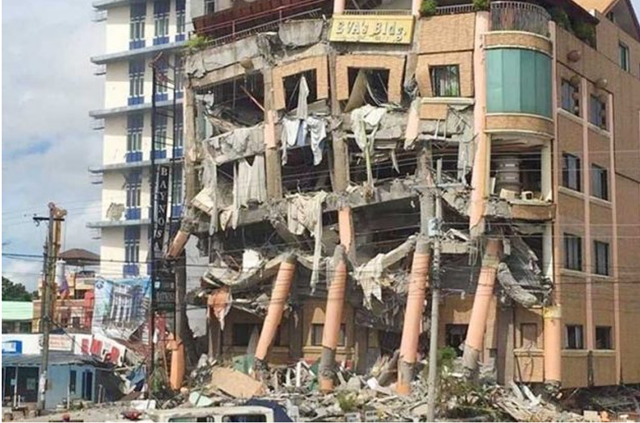Mindanao quakes: Largely episodic

STILL REELING from the two destructive quakes in Tulunan, Cotabato last month, Mindanao was once again jolted by a magnitude 5.9 tremor, this time in Kadingilan, Bukidnon, on Monday, November 18. Sixteen people were reportedly injured.
This incident followed the magnitude 6.6 and 6.5 which struck Cotabato on October 29 and 31 respectively, affecting more than 320,000 people per the November 22 data from the National Disaster Risk Reduction and Management Council (NDRRMC). A new seismic event has unfolded, but the public has yet to get updates on rehabilitation plans for destroyed communities.
As in their coverage of disasters, media provided a rundown of the wounded, the dead and the displaced communities, as well as damaged structures. But accounts largely depended on what journalists saw on the ground, which also revealed the lack of adequate response to provide for the affected communities.
CMFR monitored the primetime newscasts (ABS-CBN 2’s TV Patrol, GMA-7’s 24 Oras, TV5’s Aksyon and CNN Philippines’ News Night) and the leading broadsheets (Manila Bulletin, Philippine Daily Inquirer and The Philippine Star) from November 10 to 18.
Episodic
The Mindanao-based press, including SunStar Davao, Mindanao Gold Star Daily and MindaNews reported on health-related issues in the evacuation sites, the need to relocate thousands of families in Kidapawan, and the situation of Moro and Lumad families.
Among the Manila-based press, TV Patrol last provided an update on the situation of evacuees in a story on November 12 about tents being destroyed by strong wind and rains. There have been no follow-up reports since.
Newspaper accounts reported on several developments, with stories about the loans extended to those affected for rehabilitation; the call of Davao business leaders to review the building code and the army personnel saving their meal allowances for earthquake victims. CMFR notes the Inquirer’s reports on the peculiarities of the Cotabato earthquakes and the need for the building code to be rigorously implemented.
Reports noted the failure of local government units to respond because they too were affected. But media should closely follow up on the rebuilding phase.
Defense Secretary Delfin Lorenzana was tapped to lead relief efforts on November 2. Media reported him saying on November 7 that the calamity fund of North Cotabato is nearly depleted because it had already been used to ease the effects of drought. He described the situation as a humanitarian crisis, which Ricardo Jalad, executive director of NDRRMC, refuted.
More than two weeks later, there is scant update on the government’s plans for rehabilitation and and rebuilding. Disaster effects last longer than the news cycle. Piecemeal updates hardly reflect the rest of the story. Covering the conditions in the aftermath helps to ensure that government does not forget to address the needs of the affected.
Leave a Reply